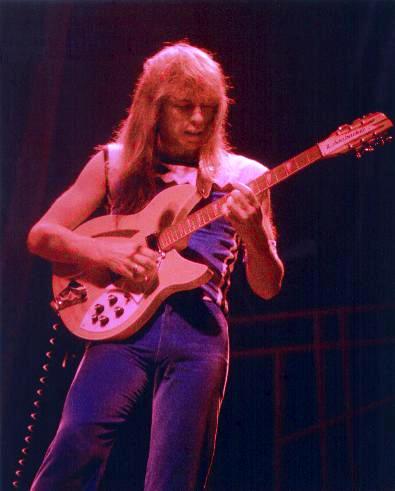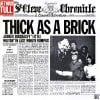/PAlogo_v2.gif) |
|
Post Reply 
|
| Author | ||
mirco 
Forum Senior Member 
Joined: January 04 2005 Location: Venezuela Status: Offline Points: 819 |
 Topic: Crazy stereo sollutions Topic: Crazy stereo sollutionsPosted: February 15 2005 at 16:56 |
|
|
Reading the thread about were you listen to your first prog purchase, I remembered that when I was 17, I had two amplifiers. Each one of them had a channell burnt, so I plugged the right output of my turntable and the right input of my cassette corder to the one with right channell ok, same thing with the left channell, and recorded very hilarious tapes (for some reason, the sound where "faster" in one of the amplifiers, so the tapes have a delay between right and left channell).
Edited by mirco |
||
|
Please forgive me for my crappy english!
|
||
 |
||
The-Bullet 
Forum Senior Member 

Joined: January 23 2005 Location: United Kingdom Status: Offline Points: 401 |
 Posted: February 15 2005 at 18:08 Posted: February 15 2005 at 18:08 |
|
|
I think I read somewhere that some audiophiles today use seperate amps for each speaker, or maybe it's a different amp for each of the 2 inputs on some speakers. My speakers have 2 inputs (bi-wiring for treble and bass), but I'm not so frivolous as to have 2 amps
 . .
|
||
 "Why say it cannot be done.....they'd be better doing pop songs?" |
||
 |
||
mirco 
Forum Senior Member 
Joined: January 04 2005 Location: Venezuela Status: Offline Points: 819 |
 Posted: February 15 2005 at 18:18 Posted: February 15 2005 at 18:18 |
|
|
So I was avant-garded without knowing it... In my case it wasn't frivolity, but lack of resources!
|
||
|
Please forgive me for my crappy english!
|
||
 |
||
oliverstoned 
Special Collaborator 

Honorary Collaborator Joined: March 26 2004 Location: France Status: Offline Points: 6308 |
 Posted: February 16 2005 at 05:56 Posted: February 16 2005 at 05:56 |
|
Yes, you can use one amp par channel, for a better "image" and when you bi-amp (tube amp for high freq and transistor amp in the low),that can make a total of 4 amps! And you can bi-cable moreover. I have bicable and double the low freq cables (which makes 3 cables per speakers, 150€ the meter of cable) i know a very big audiophile who has transparent opus speakers cables, which costs 120.000€ (150.000dollars) cause he has 4 pieces of transparent opus cables (30.000€ per piece of cable) he heas one of the best system in the world! (that's him who has the best Mark Levinson cd player in the world : 45.000 dollars with cables) |
||
 |
||
Guests 
Forum Guest Group 
|
 Posted: April 11 2005 at 08:53 Posted: April 11 2005 at 08:53 |
|
|
Yes you can use a seperate power amp per set of units,this is called Bi-Amping.Even better results is to use mono block power amps per each unit per each channel.But you must have a split cross over,most serious speakers these days have Bi -Wire facilities.Apart from the obvious lack of Cross over interaction between unit frequencies you also gain with mono block power,the fact that the amp has its own dedicated power supply,same kindda thing your trying to gain by bi-amping...
What is the difference between bi-wiring and bi-amping?
Oliver mentions using Valve power for the high frequency & Transistor for lower end.This has it's good points but ideally you need the same output from both variant or you could end up with a serious mismatch level.Ideally if your gonna do this you want a gain control for the Valve power amps to tailor the output,but as it goes in serious hi-fi you trying to scrap as many sound barrier hurdles in the chain as you can ie:volume/tone controls,switches etc which all add resistance to the chain.
|
||
 |
||
Sean Trane 
Special Collaborator 
Prog Folk Joined: April 29 2004 Location: Heart of Europe Status: Offline Points: 19626 |
 Posted: April 11 2005 at 10:05 Posted: April 11 2005 at 10:05 |
|
This bi-wiring really brings up the sound? Is the double wiring (and therefore double the cost) really worth it?I have B & W A6304 speakers that would allow such thing and good cables . I know that cables do make differences as I saw recently when I got rid of those stupid white and red RCA connector supplied with my NAD amplifier. I chose some uni-directional silver wires with Gold contact between my CD deck and the amplifier and what a difference this made! |
||
|
let's just stay above the moral melee
prefer the sink to the gutter keep our sand-castle virtues content to be a doer as well as a thinker, prefer lifting our pen rather than un-sheath our sword |
||
 |
||
Guests 
Forum Guest Group 
|
 Posted: April 11 2005 at 20:11 Posted: April 11 2005 at 20:11 |
|
Yes the additional wiring is worth it.Bi-wiring you actually power each section of the cross over.More control & x-over interaction between the driver units is down to minimum...This is really only an evident upgrade if you have excellent quality equipment.Remember bi-wiring & bi-amping are different... Edited by Karnevil9 |
||
 |
||
Sean Trane 
Special Collaborator 
Prog Folk Joined: April 29 2004 Location: Heart of Europe Status: Offline Points: 19626 |
 Posted: April 12 2005 at 10:34 Posted: April 12 2005 at 10:34 |
|
|
Thanks KE9! I shall try this , soon! |
||
|
let's just stay above the moral melee
prefer the sink to the gutter keep our sand-castle virtues content to be a doer as well as a thinker, prefer lifting our pen rather than un-sheath our sword |
||
 |
||
oliverstoned 
Special Collaborator 

Honorary Collaborator Joined: March 26 2004 Location: France Status: Offline Points: 6308 |
 Posted: April 12 2005 at 10:37 Posted: April 12 2005 at 10:37 |
|
|
yes, for one time, i agree with him
I'm a bi-wiring adept (and even to double the low-freq! remember!) and bi-amp with tubes in the high and transistor in the low is the royal way! |
||
 |
||
Guests 
Forum Guest Group 
|
 Posted: April 13 2005 at 08:19 Posted: April 13 2005 at 08:19 |
|
|
Oliver i said that using your tube power amp is a bad idea blasting rock music through due to the threat of over driving your tubes & putting excessive strain on your output transformers.You said near enough i was talking bollox. But above you've just contradicted yourself saying tube for high end & transistor for low end power.You must use transistor on low end for loud rock music,agreeable regarding tubes for high end but christ Oliver make your mind up
|
||
 |
||
oliverstoned 
Special Collaborator 

Honorary Collaborator Joined: March 26 2004 Location: France Status: Offline Points: 6308 |
 Posted: April 13 2005 at 11:42 Posted: April 13 2005 at 11:42 |
|
|
I say tubes for high because it's obvious tubes easily beat transistor in the bass freq but the low are still a little "round" with tube.
So, it's a way to combine the advantages of each technology. You don't know that, after 25 years in Hifi? |
||
 |
||
Guests 
Forum Guest Group 
|
 Posted: April 13 2005 at 15:11 Posted: April 13 2005 at 15:11 |
|
|
f**k OFF YOU SILLY LITTLE BASTARD. YOU KNOW IF I KNEW WHERE YOU LIVED I'D TAKE TIME OUT & COME OVER THERE TO KNOCK SOME F**KING SENCE IN YOU STUPID HEAD.TEENAGE PRICK
Edited by Karnevil9 |
||
 |
||
oliverstoned 
Special Collaborator 

Honorary Collaborator Joined: March 26 2004 Location: France Status: Offline Points: 6308 |
 Posted: April 13 2005 at 15:37 Posted: April 13 2005 at 15:37 |
|
|
Erratum: I wanted to say "tubes are better in the HIGH than transistor", and not the contrary.
To the sad fellow above: I wouldn't want to be in your place. It's hard for your ego that a "teenage" learn you life. |
||
 |
||
Easy Livin 
Special Collaborator 

Honorary Collaborator / Retired Admin Joined: February 21 2004 Location: Scotland Status: Offline Points: 15585 |
 Posted: April 13 2005 at 15:53 Posted: April 13 2005 at 15:53 |
|
|
I've always had my doubts about the benefits of bi-wiring. Here's an article on the subject: http://www.eastwoodhifi.com.au/tweak.htm The first part reads: Bi-Wiring, this'll upset any audiophiles who slipped through my front page warning! For general home use, bi-wiring speakers offers absolutely no benefit whatsoever except for doubling the thickness of the speaker wire (which is why most people can hear an improvement). Those little electrons don't magically split into various frequencies and follow the path to the correct speaker (tweeter, woofer or whatever) so don't waste your time and money. |
||
 |
||
goose 
Forum Senior Member 
Joined: June 20 2004 Location: United Kingdom Status: Offline Points: 4097 |
 Posted: April 13 2005 at 15:59 Posted: April 13 2005 at 15:59 |
|
There is definitely an audible different even for my humble system when I biwire. Surely the amp itself splits up the signal? |
||
 |
||
oliverstoned 
Special Collaborator 

Honorary Collaborator Joined: March 26 2004 Location: France Status: Offline Points: 6308 |
 Posted: April 14 2005 at 02:48 Posted: April 14 2005 at 02:48 |
|
There's a huge improvement by double wiring; And even more if you double the low cable (because the boomer need much power, and when you double, you lower the cable's resistivity), this result in an huge improvment on all criterias: image (soundstage), dynamic, low and HIGH. When you bi-wire, you relieve your amp by lowering cable's resistivity. In hifi, you have many theories. But sometimes theories don't match with the practice. A goodtube amp has higher distorsions levels than a transistor amp. But when you listen, it's night and day: the transistor amp will make "rape with cheese" in the highs, whereas the good tube amp will give you shivers on voices, violins, trumpets, in one word: music! So what does it means? It means that it is'nt the good criteria for judging musicality. It's the same with the bi-wire or bi-amp question: some will tell you that it creates problems with filters and other things... But when you do, it's better: more musical. And that what's important. |
||
 |
||
Post Reply 
|
|
| Forum Jump | Forum Permissions  You cannot post new topics in this forum You cannot reply to topics in this forum You cannot delete your posts in this forum You cannot edit your posts in this forum You cannot create polls in this forum You cannot vote in polls in this forum |